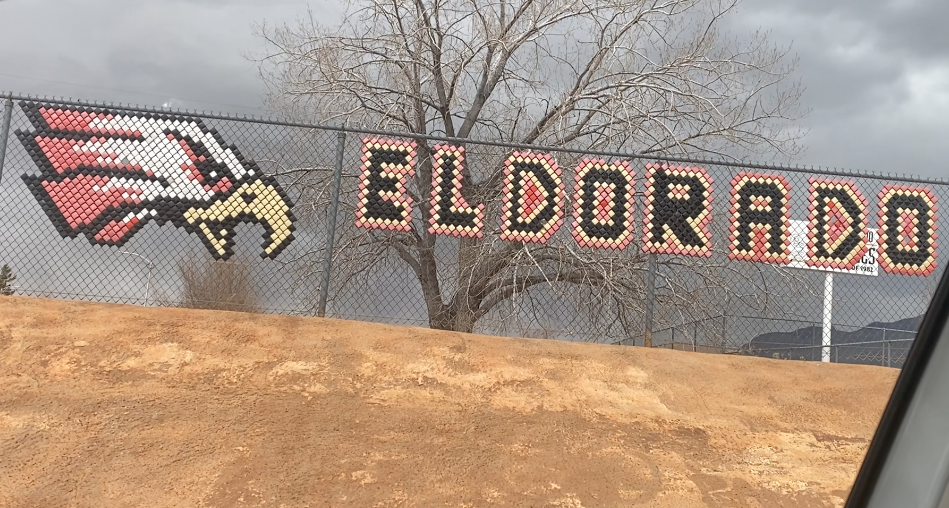By Shane Farias / NM News Port
As public schools gear up for student reentry for the first time in more than a year, staff and students are expected to follow the guidelines provided by the New Mexico Public Education Department.
“We expect all schools to offer full reentry no later than April 5,” NMPED Deputy Communications Director, Judy Robinson, said. “Full reentry means students are able to access in-person learning every day.”
“Hybrid is being phased out,” Robinson said, referring to the practice of teaching on site some days and remotely on other days.
However, students may still opt out of in-person classrooms and remain in a totally remote setting for the remainder of the school year. Those that opt to return will be expected to attend class on a regular schedule, Monday through Friday, until the last day of school.
“Families may decide to keep their students in remote [learning] through the end of the year,” Robinson said. [NM]PED has no way of knowing yet how many students and their families will choose that option.”

While the exact number of returning students is still unknown, Albuquerque Public Schools’ Interim Chief Operations Officer, Gabriella Blakey, told the Albuquerque Journal that a recent informal survey suggested that approximately 50% to 60% of students from each school are planning to return.
Teachers say the return to the classroom will mean a better education for kids.
“If there is a different environment and different people you’re able to interact with,” Eldorado High School teacher, Matt Dixson, said, “I think that gets different neurons and synapses firing, and that creates a more fertile environment for learning.”
In acknowledgment to those returning, APS has provided an online checklist. The list advises students to bring masks, a jacket and a fully-charged laptop or tablet to communicate with those that continue to attend class from home. The suggestion to dress in layers is due to the fact that classroom windows and doors will likely be left open along with air conditioning ducts in order to circulate air.
“[NM]PED, as well as districts and schools, have planned extensively for school reentry,” Robinson said. “Regarding the curriculum, [an] Academic Roadmap [was] published earlier this month.”
The 15-page roadmap includes tips on accelerated learning as well as a “Theory of Change” section aimed at transitioning students back to a traditional classroom and identifying potential problems such as acquired learning gaps and “unfinished learning,” which should be addressed in each curriculum.
Also included in the requirements for the return of students is a Reentry Guide, which is based on three specific guiding principles: prioritizing the health and safety of students, staff and communities; maximizing the amount of safe, in-person learning opportunities; and making decisions based on science and data. The NMPED, in association with Los Alamos National Laboratory, will ensure each institution’s participation in a surveillance testing program to determine the “COVID-19 Safe Operating Categories” for each school district.
Other arguably important aspects of public education being considered in the guide are cultural relevance and relationships, which, as a part of “Social Emotional Learning” will “include curricula that teaches students about diversity and antiracism” as well as honoring identity and cultural nuances.
“There’s so many forces in the classroom,” Dixson, the high school teacher, said, referring to in-person advantages over online learning. “Whether it’s the teacher or ‘who’s next to me?’ and all of that keeps you aware of what’s going on — whereas, in your room, with the same four walls, the same candle [and] the same outfit; it just blends into the miasma of every day.”

While students and staff will be expected to follow social distancing guidelines and refrain from any large group activities and gatherings, the NMPED is recognizing the cultural importance of in-person learning. The forming of healthy and caring relationships is encouraged throughout the “Social Emotional Learning” section in the Reentry Guide.
“Teaching at its nature is a bit of an art,” Dixson said. “It is a person-to-person endeavor and it’s difficult to make a really nice picture on that canvas when I have 35, 1-inch-by-1-inch images of kids that are all afraid to speak because they don’t want to talk over each other. What it ends up doing is it just slows the process down.”
Shane Farias is a reporter for New Mexico News Port and can be reached at nmnewsport@gmail.com